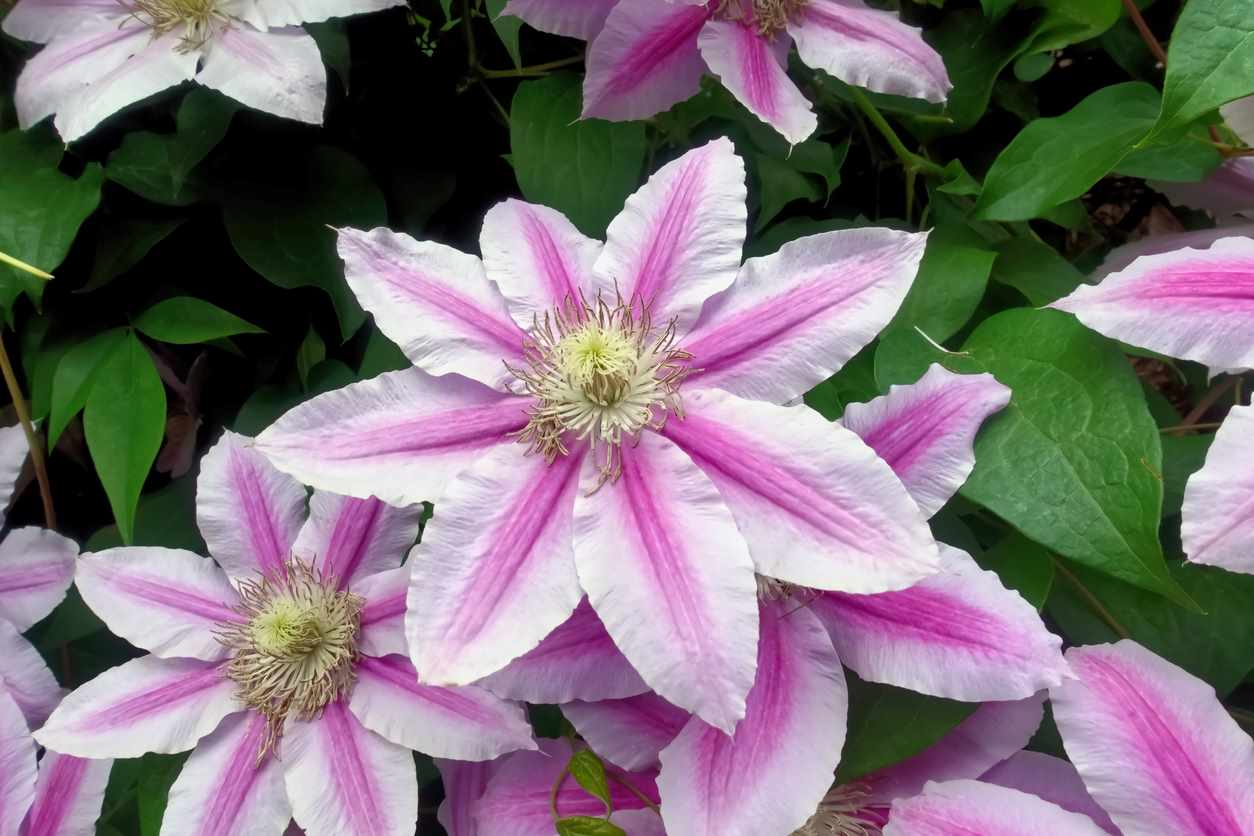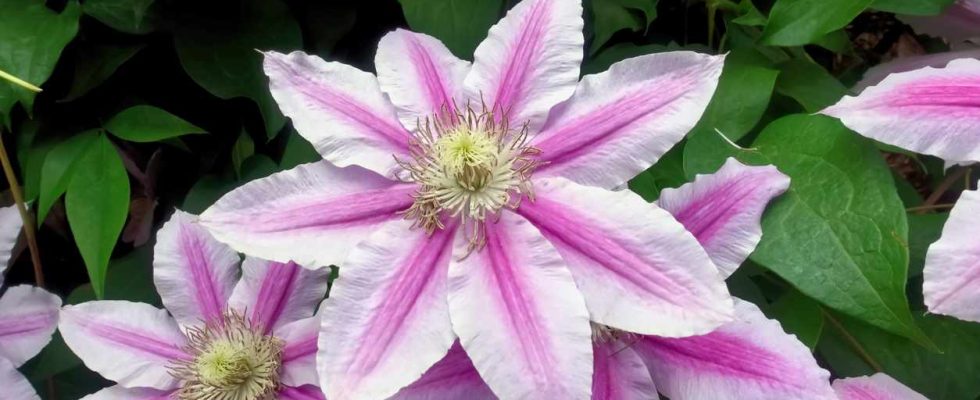
Large-flowered clematis: how to tell them apart?
Among the clematis classified as “large-flowered”, the size of the corollas varies from 10-12 cm to more than 20-22 cm. They all have the particularity of displaying their flowers horizontally. Their vigor generally remains average (it is rare for them to soar more than 2 m), especially if they are pruned every year.
These varieties come in a wide range of colors, from pure white to dark velvety red Passing by magnificent blues and countless two-tone varieties, offering soft shades of pink. There are also magnificent varieties with double flowers, which stay in bloom longer than single ones.
In the garden, these large-flowered clematis are no more delicate than the others if you plant them in the place that suits them.
Avoid walls, at the foot of which the earth is often poor and dry, as well as places that are too humid. The ideal is soil that does not dry out in summer (so as not to have to water them, something they hate above all else), but which does not remain waterlogged in winter. Install them on the north side of a shrub or conifer: their foliage will highlight the flowers.
They are also the most beautiful to crawl on ground cover or low shrubs, a situation which clearly highlights their large corollas. When it comes to pruning, it’s not complicated: cut one or two of the thickest stems each winter; they will be replaced by new ones, finer but more vigorous and floriferous.
Our top 3 large-flowered clematis
| Varieties | Special features | Development | Use | Our opinion | |
| Plain flowers | ‘Kacper’, ‘Mme Lecoultre’, ‘Lasurstern’ ‘The President’, ‘Niobe’. | Flowers sometimes very large, generally whitish on the reverse. The color of the stamens, yellow or black, enhances the color of the petals. | From 1 to 3 m, but it is better to prune every other branch in winter. | On a flowering shrub or a climbing rose bush in a matching color, on a foliage shrub or a conifer in a contrasting color. | Despite their large size, they maintain a very natural, unsophisticated appearance, especially if they are placed in vegetation. |
| Two-tone flowers | ‘Bee’s Jubilee’, ‘Nelly Moser’, ‘Fireworks’, ‘Dr Ruppel’, ‘Mrs Thompson’. | The flowers bear two colors, usually a darker middle stripe and a lighter rim, but sometimes it is the reverse, | From 1.50 to 3m, but it is better to prune 1 branch out of 2 in winter. | On flowering shrubs or shrub or climbing roses in assorted colors. They also work wonders on a fence (wire mesh, claustra). | The effect may seem artificial, but it is not, especially if this flower is associated with two other plants, each wearing one of the two colors. |
| Double flowers | ‘Arctic Queen’, ‘Vyvyan Pennell’, ‘Blue Light’, ‘Franziska Marie’ ‘Josephine’ | Part of the stamens being transformed into petals, the flower takes on a “double” or “semi-double” appearance. They last 3 to 3 times longer than simple ones (they are not fertilized). | Smaller than varieties with single flowers: 2 m maximum. We prune them little, just to eliminate the small wood that is dry and devoid of buds. | The ideal companions of roses, and climbers dreamed of dressing the pylons of a pergola or a small trellis, in situations where you can admire the corollas up close. | Some find them sophisticated, but they are magnificent, especially when they display their many petals, often thick and velvety. Varieties of choice. |

